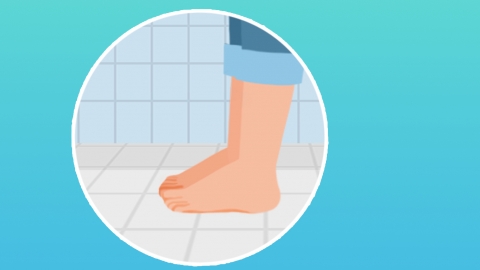What should I do if I sprain my ankle and it swells during pregnancy?
In general, treatment methods for ankle sprains with swelling during pregnancy mainly include immediate immobilization and rest, local cold and heat therapy, elevating the affected limb to reduce swelling, safe medication for symptom relief, and professional physical therapy. Specific details are as follows:

1. Immediate Immobilization and Rest
After a sprain, stop all activity immediately and avoid weight-bearing walking to prevent further injury. Use wheelchairs or crutches to assist movement, allowing the injured foot sufficient rest to minimize additional soft tissue bleeding and swelling, thus laying the foundation for recovery.
2. Local Cold and Heat Therapy
Within the first 48 hours after injury, apply an ice pack wrapped in a towel for cold compression, 15–20 minutes per session, to suppress blood vessel dilation and reduce swelling. After 48 hours, switch to warm compresses using a heated towel to promote local blood circulation, accelerate absorption of bruising, and relieve pain and swelling.
3. Elevate the Affected Limb to Reduce Swelling
When resting, elevate the injured foot above heart level, supporting it with a soft pillow. This uses gravity to enhance venous blood return, reduce blood accumulation in the foot, effectively alleviate swelling, and speed up recovery.
4. Safe Medication for Relief
When pain is significant, medications safe for pregnant women may be used under medical supervision. Topical options include diclofenac diethylamine gel; oral options include acetaminophen tablets or ibuprofen sustained-release capsules. These must be used strictly according to medical advice.
5. Professional Physical Therapy
If swelling is severe or recovery is slow, seek professional physical therapy at a hospital, such as infrared irradiation or low-frequency pulsed electrical stimulation. These therapies gently improve local circulation, help reduce swelling and relieve pain, and are safe for both mother and fetus during pregnancy.
In addition, closely monitor the condition of the foot after injury. Seek immediate medical attention if symptoms such as pale skin, numbness, or abnormal fetal movements occur. During recovery, wear loose and comfortable footwear to avoid pressure on the injured area. Inform your doctor about the sprain during routine prenatal checkups to ensure safety throughout pregnancy.




